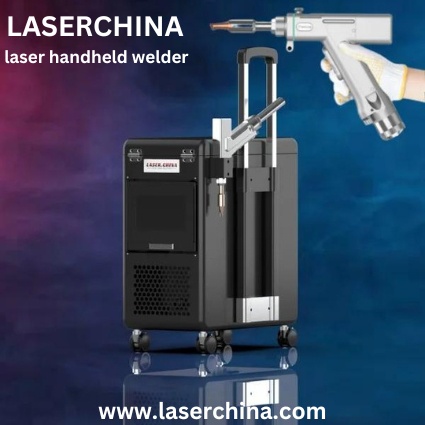In the world of welding, precision and efficiency are paramount. Among the arsenal of welding tools available, laser handheld welder stand out for their ability to deliver high-quality welds with unmatched precision. In this guide, we'll delve into the intricacies of using a laser handheld welder effectively, providing you with the knowledge and skills to master this advanced welding technique.
Understanding Handheld Laser Welding: Laser handheld welders utilize concentrated beams of light to fuse materials together with extreme precision. Unlike traditional welding methods that rely on heat to melt materials, laser welding minimizes heat input, reducing the risk of distortion and damage to the surrounding area. This makes it ideal for welding delicate components and materials with high thermal sensitivity.
Setting Up Your Handheld Laser Welder: Before diving into welding, it's essential to properly set up your handheld laser welder. Begin by ensuring that the equipment is calibrated and aligned correctly. Pay close attention to the focal point of the laser beam to achieve optimal weld quality. Additionally, make sure to adjust the power settings and pulse duration according to the thickness and type of material you'll be welding.
Preparing Your Workspace: Create a clean and organized workspace free from clutter and debris. Proper ventilation is crucial to remove any fumes or gases generated during the welding process. Ensure adequate lighting to facilitate precise welding, and always wear appropriate personal protective equipment, including safety glasses and gloves, to protect yourself from potential hazards.
Techniques for Effective Welding: Achieving a successful weld with a laser handheld welder requires a steady hand and a keen eye for detail. Practice proper positioning and movement of the welder to maintain consistent weld bead formation. Use a series of overlapping passes to ensure thorough fusion of the materials, paying attention to weld penetration and bead profile.
Troubleshooting Common Issues: Even with careful preparation, you may encounter challenges during the welding process. Common issues such as insufficient penetration, porosity, or uneven weld beads can arise. To address these issues, carefully assess the root cause and make adjustments to your welding parameters accordingly. Experiment with different power settings, pulse durations, and welding speeds until you achieve the desired results.
Post-Welding Inspection and Finishing: Once the welding is complete, conduct a thorough inspection of the weld to ensure its integrity and quality. Use non-destructive testing methods such as dye penetrant or visual inspection to detect any defects or discontinuities. If necessary, perform post-weld heat treatment to relieve residual stresses and improve the overall strength of the weld. Finally, apply any required surface finishing techniques to achieve the desired aesthetic appearance.
Conclusion: Mastering the art of laser handheld welder requires patience, practice, and a commitment to excellence. By understanding the principles of laser welding, proper setup and preparation, effective welding techniques, and troubleshooting methods, you can harness the full potential of this advanced welding technology. With dedication and perseverance, you'll be able to achieve precise and high-quality welds that meet the most demanding standards.


No comments yet